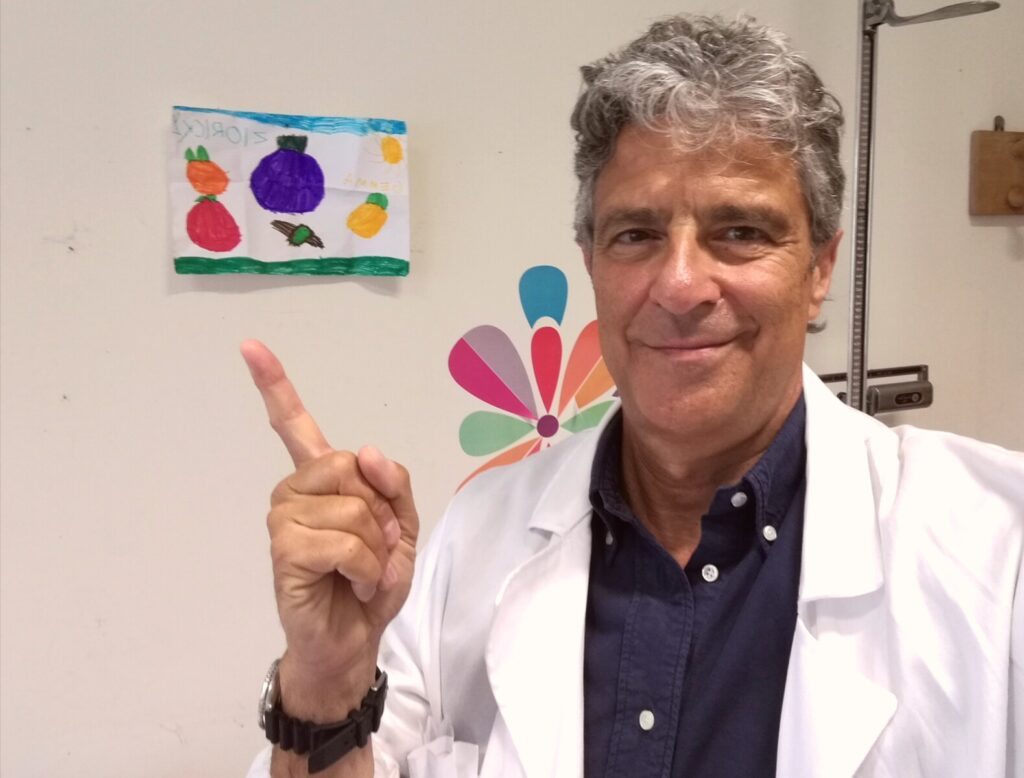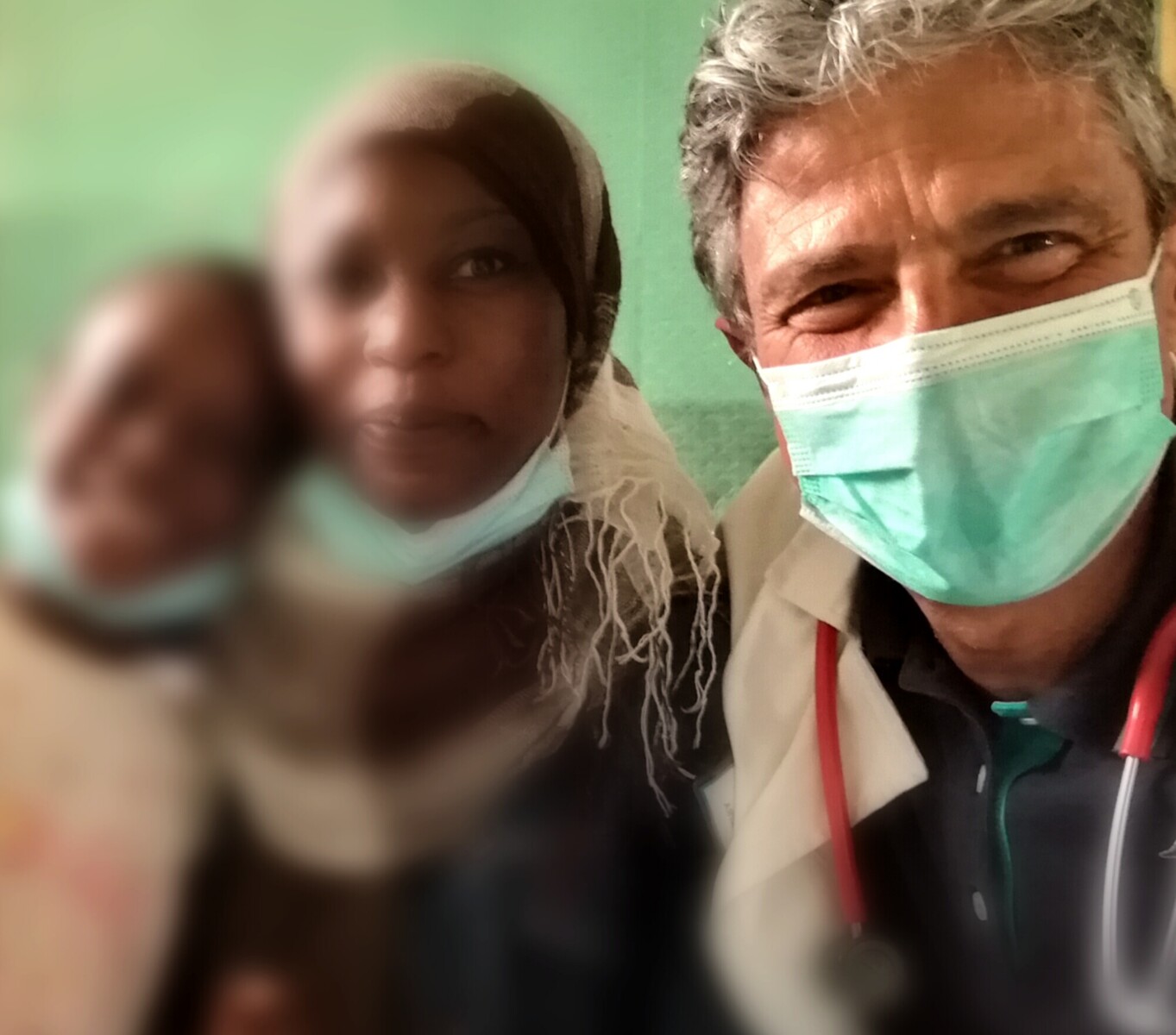Listening to childhood: Interview with Riccardo Bosi

Riccardo Bosi is an experienced and passionate pediatrician as well as a writer, a narrator of the beauty and of the complexity of living. We talked with him and started out with the genesis of his last work.
His new book entitled “The Thousands and a Childhood: Children, Cultures, Migrations,”” edited by Carocci, was released recently. A book on children, on their importance and gentleness, and on a lot more.
“A pediatrician has the opportunity to take care of many children for years and maybe (as for me) to become the doctor of the most vulnerable and of the migrants”, sayd Bosi. So, he senses the need to “give voice to those children and their stories.” His book’s dedication is very clear: “To all the children and the children disembarked too soon from the magical bastion of childhood: may the memory of certain pages of their onboard diaries—violated, torn, or simply fallen from oblivion—be able to keep our civic consciousness awake at all times.”

But does it talk about adults too, in the book?
At a certain point we forget what childhood is about — universal and multiple times, at times tough but decisive and transformative. Made of a fine weave. “With the material with which dreams are made of”—as Shakespeare writes in The Storm. This book is born to remind us how much those first years of life are fundamental for our adulthood.
And the big adult responsibility towards the childhood planet.
The word planet opens the metaphor of the Earth, to be protected with the same attention. In front of the dramatic abyss carved out between a human being and nature (the Pope talks about this in the Laudato Si), the survival of the planet depends on the position that, like us adults, are capable of assuming, from the decision of being guardians of childhood to concrete and forward-looking policies.
What approach does your work have to the theme of childhood?
There’s an immense scientific corpus on the evolutionist age, but I thought that something new could be in identifying some “gazes” by which to observe childhood.
For example?
Thinking of the children as a population in journey towards the lands of adulthood; as creative and brilliant, not “missing” of something. Not small children to be stuffed with teachings and norms, but to value and respect their uniqueness. Children not only object of precious attention, cuddles, but subjects, people “already” whole, that ask for respect and claim their rights often trampled.
Is it for all?
Not only for the poorer countries, think about the millions of soldier children or to child labor, but also for our western countries, our cities as of now unlivable, polluted, and no longer child-friendly.
What is your way of listening to the children you meet? How important is listening in your work?
In college, they teach us a lot, and maybe we also become good doctors. But regarding listening, having an empathic approach and being able to put ourselves in the shoes of an anxious parent, we still have a lot to learn.
Instead, it is important!
Being there to the listen to a foreign parent or migrant can be decisive to doing well in our work. An aligned communication adds an instrument to our baggage.
A dual listening…
Besides, obviously, that of the children: moreover, a right under the 1989 UN Convention on the Rights of the Child, which says to make a child a participant in every medical procedure.
How did you learn about it?
With a lot of effort in my first years of work with cancer patients. I learned that the glances and silences count even more than words. The prospective changes while talking to children and adults.
The title touches the theme of the fairytale.
Fairytales are “children’s breath,” their atmosphere. As children, we want to understand everything. We ask profound and uneasy questions: “Where do we go after we die?” Maybe embarrassing: “Why is that man with a big stomach pregnant?”
Why do we do this?
Because we are in search of a meaning. The function of a fairytale is to create the first elements of that wisdom that needs a lot of time. Fairytales know how to disseminate pearls of knowledge and sense in a gradual and adequate way based on the age. Intercepting the magical thoughts of children, they explain deep and maybe painful truths without scaring them through simple words.
With the filter of “Once upon a time…”
Working in a timeless mode, they keep at bay reality. It is as though they take the child by hand without preventing that the symbolic language touches all the elements of their personality. Fairytales and playing are among the cardinal points of childhood.
But the fairytales are interrupted by real life: in the book you put clear and precise stories with fictional names. How do they relate to the more theoretical part?
To start from “the particular case” can help the reader understand the importance of the theoretical part. The stories help us understand how the respectful, noninvasive “observation” for the first years of life and then the “listening” of the children in the successive years (when they know how to narrate to themselves) are the best instruments to understand a child.
They are all true stories.
Rigorously. Narrated by parents, collected at the outpatient clinic, lived dramatically in the humanitarian corridor. Some, funny and disorienting while others true “documents.” I think of the migration context: with colleagues of various disciplines, we were witnesses of events, wounds, and traumas that maybe one day will be on our history books. Today those lives are wounded bodies; they experience post-traumatic stress disorders as results of assisted violence or torture.
The stories “collected from the field” enforce the theory.
In the text, by itself scientific, I have integrated narrative passages and tough, light, unique stories to remember and “give voice to the children.” “All the adults were once children, but only a few remember this,” wrote Antoine de Saint-Exupéry in his dedication to “The Little Prince.”.
Let’s go back to the relationship between adults and children.
If this book was required to refresh our memory on the matter, it would have already done its task. Besides, the stories were necessary for an allegiance to the distant roots of this book, which was born out of an exchange of pediatric stories with actress friend Stefania Bogo, who scripted a stage adaptation of it as an experiment in a civic theater: “The Island of Children.”
In the introduction of this book there is the possibility to immerse ourselves in the stories of lives and growth of “other’s children,” born at the borders of society or on the other side of the Mediterranean. Who really are these children?
They are those who live in our city, thanks to the cultural crossover generated by the migration phenomenon. Children of distant worlds who cross each other in schools, parks, and in our pediatrics. It is a process of methodology in which the identity roots and memories of the origins, transmission of knowledge, and educational styles enter the picture.
You talk about our times and our world, inevitably…
The construction of a multicultural society is a fragile process; without “taking care,” it becomes confrontational, exhausting, and violent. The on-the-field experience of a pediatrician that works with the migrated children says that starting again with the children and allowing them to grow together—even with those coming from outside—would be the best way to avoid conflicts and confront the future.
Fundamental…
Every migration introduces an abrupt rupture between two universes, but at the same time opens up to infinite differences in the ways of taking care of children: the world reaches us directly at home, a great richness within hands reach, and yet we find it hard to recognize it.
I really liked the definition of children as travelers.
Journey is the central metaphor, the guiding image of the book. Children really do make the most complex and manifold of journeys: of discovery of themselves and the world, of exploring their own motor and sensory potential, of the formation of their character and personality. They change, grow, and evolve. Why do we persist in thinking of them as a category, and sometimes almost the opposite to that of the adults?
True!
Those travelers still exist: us. The sequence of the stages of development forms the biography of only one protagonist. By now it is increasingly clear to us that what happens to the child today will affect his or her adulthood tomorrow.
In your book, you talk about different observation methods. You define one as “eulogy of child imperfection.” Can you elaborate?
From infancy, we have incredible skills. Children have a prehensile memory; they are scientists because they pursue the method of experimental, stubborn problem solving. They take risks; they dare the new, like scientists.
Yet, do we not see it?
We do not value it. “They can sing, pedal, and dance. They are great artists and scientists, refined philosophers who question the deep meaning of life. Anna Granata, professor of intercultural pedagogy at the University of Milan-Bicocca, writes in one of her books, “As a child, I was a genius,” which concludes with this statement, “Then something changed. A powerful and imperceptible selective filter comes into play with early experiences in the family, at school, and in public spaces. The idea that there are forms of intelligence to be cultivated and not inhibit many expressive and imaginative qualities.” Children’s creativity and uniqueness should be respected.
To what extent can your book be political?
Anyone who works with children is doing politics—the highest and most forward-looking, but also the least comfortable and rewarding, because it will perhaps bear fruit decades later, but valuable because it concerns the polis of the future, composed of and governed by the children of today.
Starting with the most fragile…
The strength of a bridge is calculated on the weakest pillar; it only takes one to collapse for the whole bridge to collapse. Designing a coexistence for vulnerable people—whether with disabilities, the elderly, or children—means securing the entire resilience of society. The book is permeated by this idea of “putting children back at the center of our communities.”
